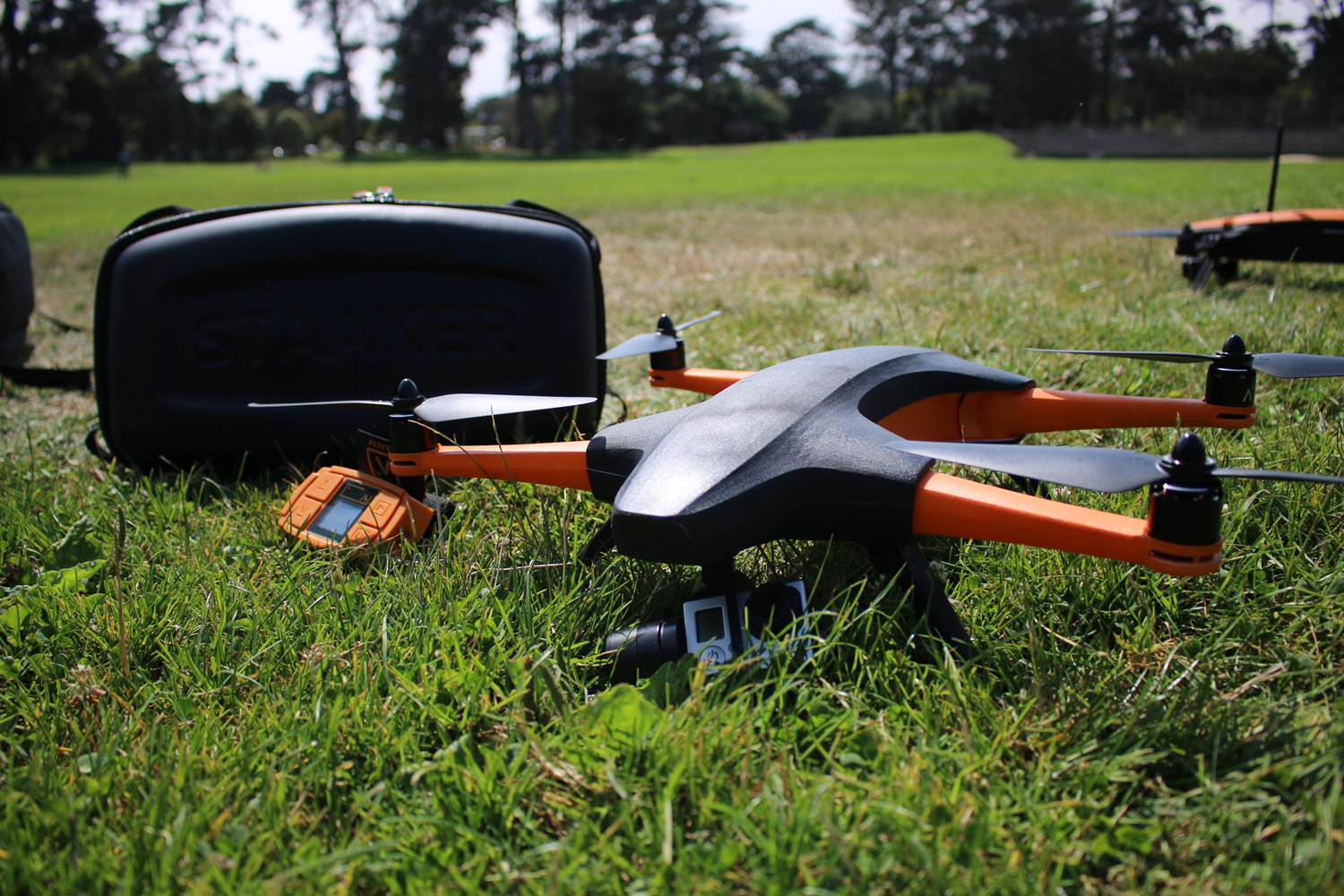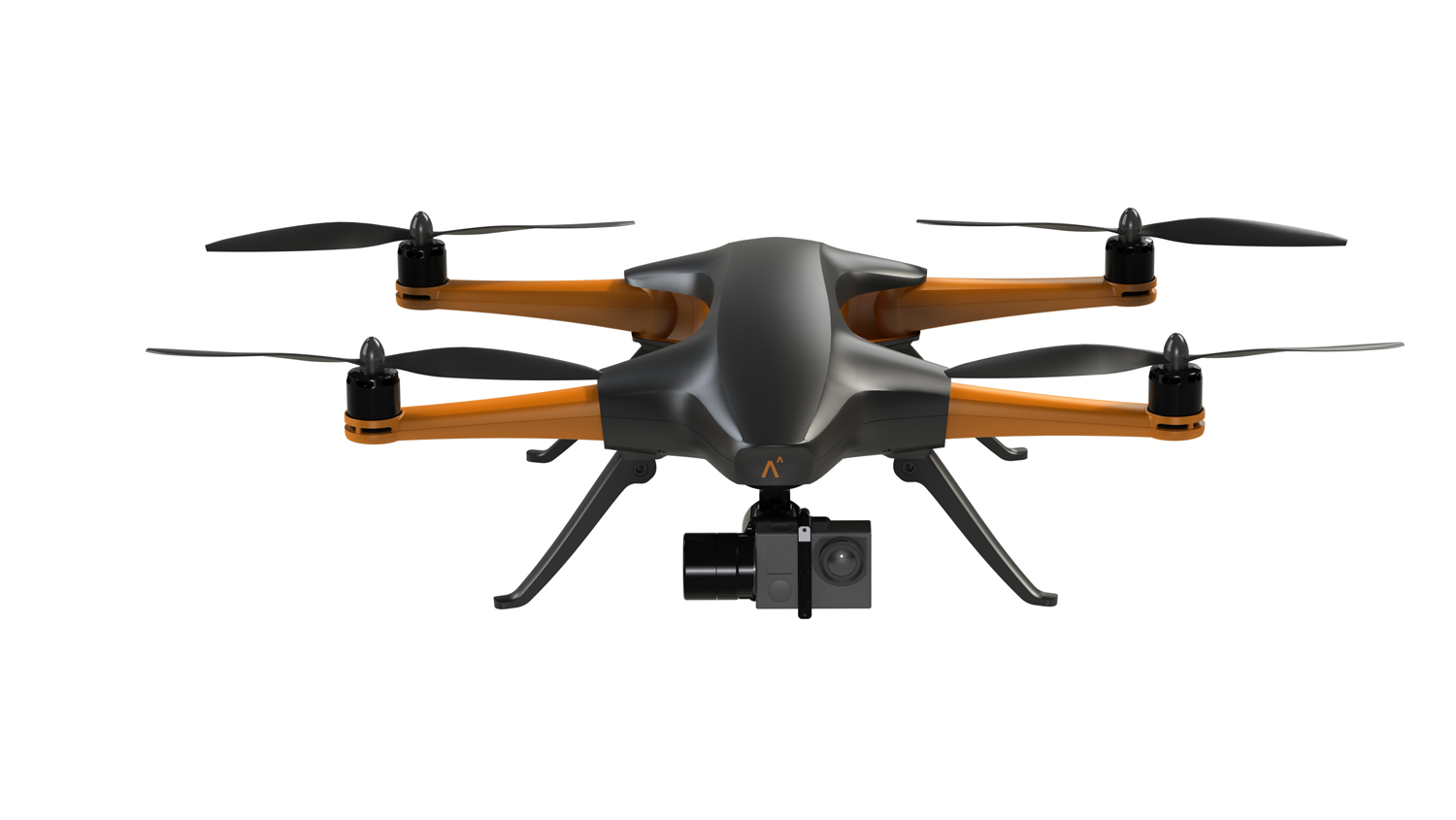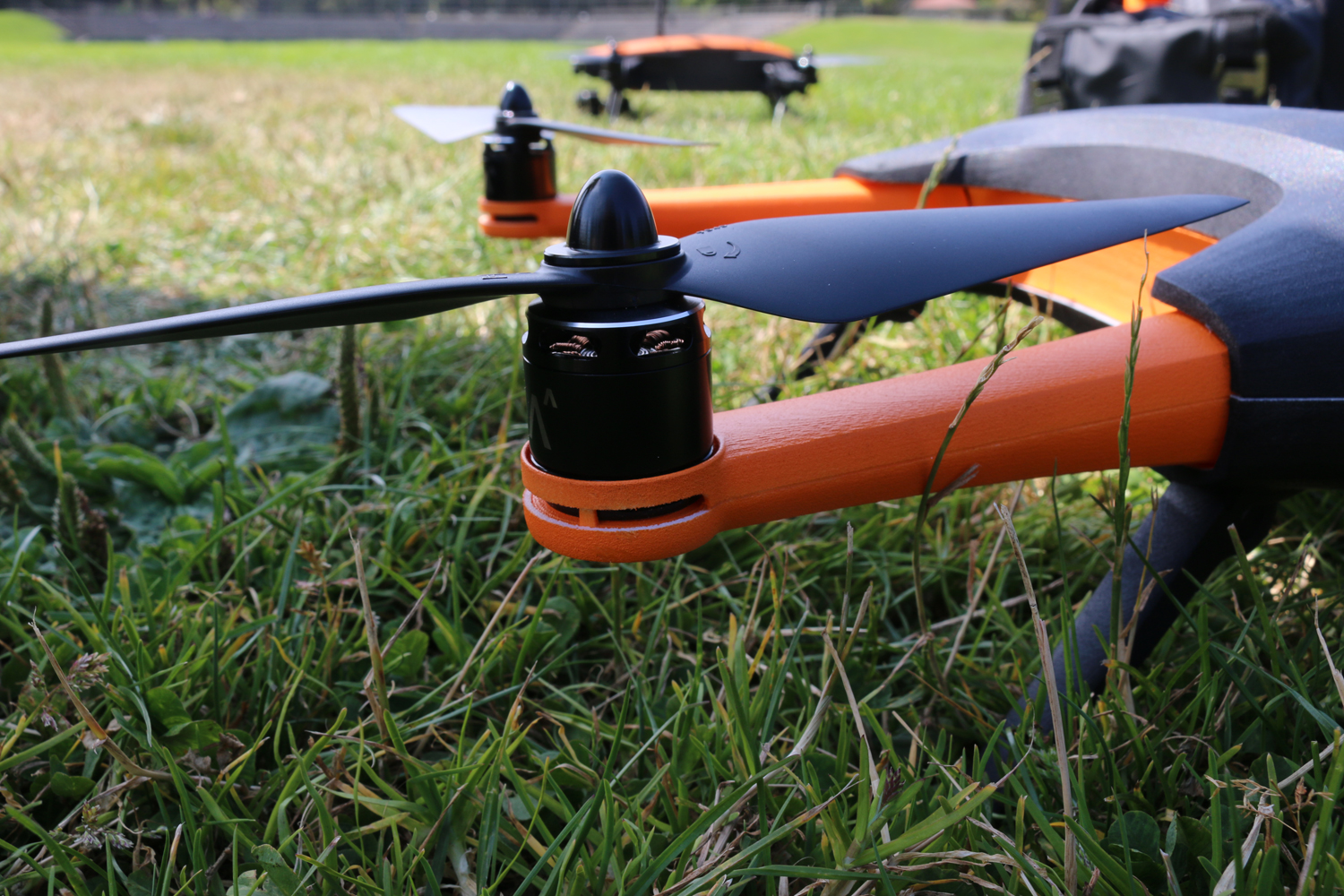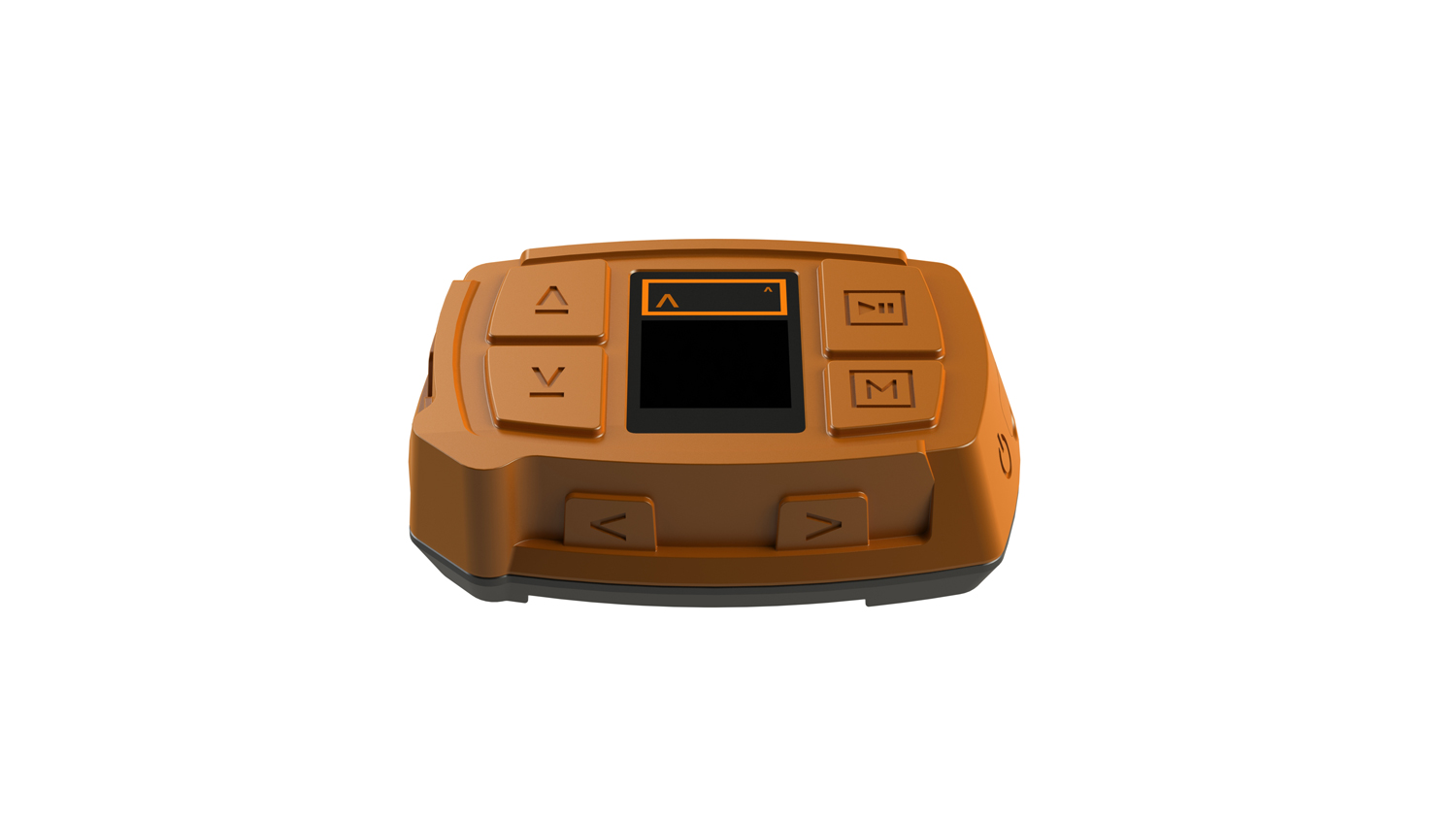This $1,200 Drone Follows You Anywhere to Get the Right Shot
The Staaker drone offers five different auto-follow modes, allowing you to ski, surf and take on all sorts of extreme activities while it captures the shot.
When you're whooshing down a slope, you want to focus on your skiing, not on the drone that's capturing your every twist and turn. Staaker has spent the past three years developing an auto-follow drone that's capable of tracking you as you glide down a mountain, zip across water or perform any other task you want filmed without having to pilot the drone yourself, and the drone is about to hit the market.

Pre-orders begin for the Staaker drone today (Aug. 2). You can buy one for $1,195, which includes not only the drone, but a controller and travel case. Staaker is set to arrive in December, when the regular price of $1,795 goes into effect.
The idea behind Staaker is to provide a drone with a lot of built-in intelligence so that it can handle the tasks of filming whatever activities you care to capture.
"Simplicity and ease of use are insanely important," CEO and founder OJ Seeland said, just before sending the Staaker drone aloft over San Francisco's Golden Gate Park to demo its auto-follow capabilities.
MORE: Best Drones - Top Rated Quadcopters on the Market
To that end, Staaker boasts five flight modes aimed at helping you get the right shot as the drone flies at up to 50 mph anywhere within a 1,150-foot range around you. Hold keeps the drone in one place, while Follow stays trained on you as you move about.
A Compass mode comes in handy when you want the same background — say you're filming with a sunset as the backdrop — so when the drone moves to follow you, it will position itself to always train the camera in the direction you specified. In Circle mode, the Staaker rotates around you, while Scenic mode locks the drone's three-axis gimbal at a 20-degree angle for filming the surrounding area.
The Staaker offers several other compelling features, such as a water setting for when you're filming activities such as water-skiing — the drone will know to head back to shore if it's running low on battery charge. A pulse feature can move the drone closer or farther away, depending on how you want to set up your shot. A Locate Staaker feature can alert you to the drone's direction and distance, should there be an unexpected landing.

It's one thing to see the Staaker drone circling around you in the relatively benign if breezy confines of a San Francisco park; it's quite another to see the work it produces in more extreme conditions. Seeland tells me the Staaker drone helped film a recent video put together by professional free-skier Jon Olsson in which he drives a Lamborghini up a glacier at Norway's Fonna Glacier Ski Resort. Footage for the video was shot by a professional drone crew that had six attempts to capture video and a single Staaker drone, which had just two attempts. But 80 percent of the footage in the final video came from the Staaker drone, Seeland said.
That's the result of one of the other major features in the Staaker drone — artificial intelligence that's capable of detecting subtle signs of movement and making adjustments to make sure that it continues to capture smooth footage. As you turn, Seeland told me, the Staaker drone will notice your movements and turn itself in the same direction.
The drone's battery should give you 30 minutes of flight time. My demo time with the Staaker was the third of several Seeland had conducted that afternoon, and the handheld tracker used to control the drone's different flight modes indicated that the remaining battery dipped from just over 50 percent down to 43 percent after a pair of four-minute test flights in breezy conditions. You can swap in replacement batteries fairly easily, should you want to film beyond just 30 minutes of footage.
The 3.5-pound drone is 17.3 x 13.4 x 5.9 inches when fully expanded. But the four propellers fold in when you tuck in the landing gear using a locking system that holds everything into place. The folded-up Staaker drone is compact enough to easily tote around, with setup as easy as folding out the propellers when you're ready to take flight.
Sign up to get the BEST of Tom's Guide direct to your inbox.
Get instant access to breaking news, the hottest reviews, great deals and helpful tips.

The drone figures to be fairly durable, too. Seeland says it's been tested in conditions from the Arctic Circle to Hawaii, giving Staaker's engineers a chance to tweak the design. The propellers, for example, have a special design system that keeps out dust and moisture. The 3.3 x 2.2 x 1.2-inch controller is fairly durable, too, with an IP68 rating for water resistance in case you plan on doing a lot of filming around lakes and shorelines.
You can find a number of clever touches in the Staaker drone, such as the way the gimbal points the camera upward when the drone is landing to minimize the risk of damaging your camera. Those design features come after Staaker went through 50 prototypes over three years.
"All we want for you with this system is to make epic movies," Seeland says.

The Staaker works with an GoPro Hero, 3, 3+ or 4 camera.
With its durability and different follow modes — not to mention its four-figure price tag — the Staaker is clearly aimed at action sports participants and aerial photographers with serious filming demands. Eventually, though Seeland sees a drone with the Staaker's auto-follow features appealing to people engaged in less extreme activities, like filming their kids riding a bike for the first time.
"That's where we're going," Seeland said. "It will take us a little while to get there."
Philip Michaels is a Managing Editor at Tom's Guide. He's been covering personal technology since 1999 and was in the building when Steve Jobs showed off the iPhone for the first time. He's been evaluating smartphones since that first iPhone debuted in 2007, and he's been following phone carriers and smartphone plans since 2015. He has strong opinions about Apple, the Oakland Athletics, old movies and proper butchery techniques. Follow him at @PhilipMichaels.

